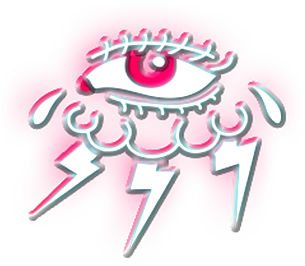Vitamins
-
What vitamin D does or doesn’t do for a body that is salt/SCN⁻ deficient
Vitamin D isn’t just a bone booster, it’s a metabolic amplifier, and its effects shift dramatically depending on the integrity of the terrain. In a body deficient in salt (sodium)… Read more.
-
Evans blue
T-1824 or Evans blue, often incorrectly rendered as Evan’s blue, is an azo dye that has a very high affinity for serum albumin. Because of this, it can be useful in physiology in estimating the proportion of body water contained… Read more.
-
Effect of biotin deficiency on embryonic development in the domestic fowl (1944) with reference and cited by articles
The approximate biotin requirements of breeding hens have been established and the embryos examined for gross pathological symptoms and the approximate age at death are recorded. Cravens, W.W., W., &… Read more.
-
Isoleucine, Tryptophol, Sleeping Sickness, The Disulfiram Effect and One Trick Hypnotists From Hell
Isoleucine (symbol Ile or I) is an α-amino acid that is used in the biosynthesis of proteins. It contains an α-amino group (which is in the protonated −NH+3 form under biological conditions), an α-carboxylic acid group (which is in the deprotonated −COO− form under biological conditions),… Read more.
-
Biotin
BIOTIN Biotin is involved in a wide range of metabolic processes in humans and in other organisms, primarily related to the utilization of fats, carbohydrates, and amino acids. The name… Read more.
-
Avidin is a tetrameric biotin-binding protein produced in the oviducts of birds, reptiles, amphibians
Dimeric members of the avidin family are also found in some bacteria. In chicken egg white, avidin makes up approximately 0.05% of total protein (approximately 1800 μg per egg). The tetrameric protein… Read more.
-
Riboflavin and its breakdown products interact with DNA, making this system attractive in the photodisinfection of blood and blood products
The application of photosensitisers to tropical pathogens in the blood supply Mark Wainwright PhD, Mauricio S. Baptista, in Photodiagnosis and Photodynamic Therapy, 2011 Riboflavin As vitamin B2, riboflavin (Fig. 5) is an essential nutrient in humans. The Mirasol system… Read more.
-
Albert Imre Szent-Györgyi – From Transylvania to Woods Hole (Vitamin C, Fumaric Acid, WWI, WWII, Vietnam War, Actin, Myosin, Muscles, Adrenal glands, Cancer, a Nobel prize, Apollonians and Dionysians, and something called the Constitution for the Federation of Earth)
Albert Imre Szent-Györgyi[a] de Nagyrápolt (Hungarian: nagyrápolti Szent-Györgyi Albert Imre; September 16, 1893 – October 22, 1986) was a Hungarian biochemist who won the Nobel Prize in Physiology or Medicine in 1937. He is credited with first isolating vitamin C and discovering… Read more.
-
Studies on the nutritional basis of abnormal behavior in albino rats; the effect of pyridoxine deficiency upon sound-induced magnesium tetany (1945)
After a magnesium deficient diet for 5 to 8 days, young rats showed vasodilatation, hyperirritability, and latent tetany. Brief exposures to the sound of a resonated buzzer elicited severe tonic-clonic… Read more.
-
Intrinsic factor (IF) and haptocorrin (transcobalamin I) are necessary for the absorption of vitamin B12
Intrinsic factor (IF), cobalamin binding intrinsic factor, also known as gastric intrinsic factor (GIF), is a glycoprotein produced by the parietal cells (in humans) or chief cells (in rodents) of the stomach. It is necessary for the absorption of vitamin B12 later… Read more.







